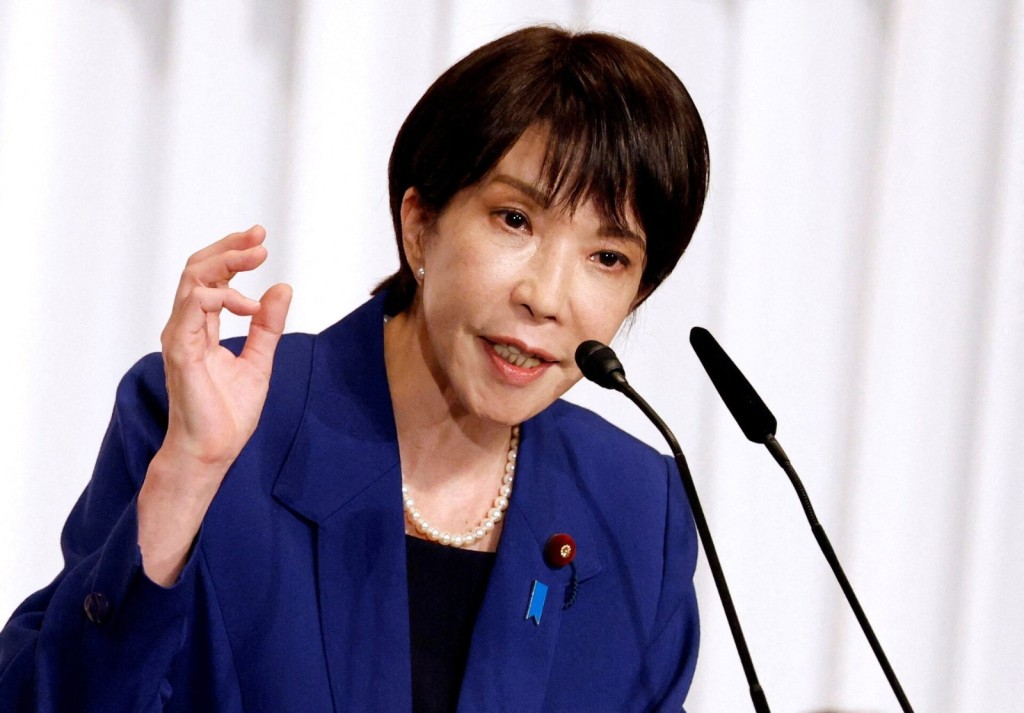Japan Faces a Bond Market Reckoning as Sanae Takaichi Prepares to Lead the Nation
Japan Faces a Bond Market Reckoning as Sanae Takaichi Prepares to Lead the Nation
By
David Goldfarb
Last updated:
October 7, 2025
First Published:
October 7, 2025

Photo: The Standard (HK)
Japan’s government bond market is standing at a crossroads as Sanae Takaichi, a hardline conservative and longtime supporter of the late Shinzo Abe’s economic playbook, prepares to take office as Japan’s first female prime minister. Her victory in the Liberal Democratic Party (LDP) leadership race signals a potential shift toward more aggressive fiscal spending, just as investors brace for an era of higher yields and tighter global liquidity.
Goldman Sachs analysts warned that Takaichi’s rise brings “upside risks to long-end Japanese Government Bond (JGB) yields,” estimating that the 30-year yield could initially climb 10 to 15 basis points, with more room to rise if markets lose confidence in fiscal restraint. The caution reflects growing anxiety that Takaichi’s pro-growth agenda—rooted in Abenomics’ mix of government spending, monetary easing, and structural reforms—could reignite inflationary pressures and unsettle Japan’s long-stable bond market.
Yields Surge to Multi-Decade Highs
The numbers already tell a compelling story. On Monday, Japan’s 30-year government bond yield jumped over 13 basis points to 3.291%, inching close to its highest level on record. Meanwhile, the 20-year yield hit 2.7%, marking its strongest point since 1999, according to data from LSEG. Yields on long-dated JGBs have surged over 100 basis points since January, fueled by investor skepticism over the sustainability of Japan’s fiscal trajectory.
For a country that has battled deflation and relied heavily on the Bank of Japan’s yield curve control (YCC) to anchor borrowing costs, these moves are a wake-up call. Analysts say Japan’s bond vigilantes—investors who punish excessive government borrowing through selloffs—are back in play. “Any attempt by Takaichi to unleash a new wave of stimulus spending could easily unnerve the market,” warned veteran Japan watcher William Pesek, adding that “the bond vigilantes are watching closely.”
Fiscal Firepower Meets Monetary Caution
Takaichi is expected to push for what she calls a “high-pressure economy”, one that relies on public-private investment and aggressive fiscal expansion to end decades of economic stagnation. Economists at Crédit Agricole CIB note that her policies aim to reverse Japan’s chronic corporate cash hoarding by encouraging businesses to reinvest profits and raise wages. The government is reportedly preparing large-scale investments in semiconductors, energy security, and other key technologies, signaling a deep commitment to industrial revival.
However, this approach risks colliding with the Bank of Japan’s cautious stance. The BOJ, under Governor Kazuo Ueda, has already faced market pressure to gradually unwind its ultra-loose policy after inflation stayed above 2% for more than three years. Yet, with Takaichi’s spending plans in sight, expectations of an October rate hike have faded. Deutsche Bank, citing uncertainty over Takaichi’s fiscal direction, closed its long-yen position, warning of “too much ambiguity around the timing of the BOJ’s next move.”
Global Ripple Effects and Investor Caution
Japan’s bond market isn’t operating in isolation. According to Goldman Sachs’ interest rate strategy team, heightened volatility in long-term JGBs has already made Japan a “net exporter of bearish shocks” to global bond markets. The bank estimates that a 10-basis-point jump in Japanese yields typically adds 2 to 3 basis points of upward pressure on U.S., German, and U.K. sovereign yields, illustrating Japan’s growing influence in shaping global borrowing costs.
If long-term JGB yields continue climbing toward 2% or 3%, analysts say global investors may pull back from Japanese assets, prompting capital outflows and a weaker yen. That could, paradoxically, fuel imported inflation—further complicating the BOJ’s delicate balancing act between price stability and growth.
A Return to Abenomics—But at What Cost?
Takaichi’s embrace of Abenomics-style stimulus has drawn comparisons to Abe’s early 2010s policies, which lifted Japan from deflation but left it with a ballooning public debt exceeding 250% of GDP, the highest among developed economies. While her approach may spark short-term economic growth and a stock market rally—Tokyo equities rose modestly following her LDP victory—bond investors remain wary.
“The stock market might cheer for now,” Pesek said, “but if yields on JGBs move decisively higher, we could see a very interesting battle between Tokyo and the bond vigilantes.”
Looking Ahead
Parliament is expected to confirm Takaichi as prime minister on October 15, marking a historic moment for Japan politically and economically. Her tenure will likely define how far Japan can stretch its fiscal limits without losing investor trust. The key test will be whether she can sustain economic momentum without triggering a bond market backlash or undermining the BOJ’s fragile policy credibility.
For now, Japan’s government bond market—long a symbol of calm—appears to be entering a new, more turbulent chapter. The world is watching closely as Takaichi’s fiscal ambitions collide with market discipline, setting the stage for a defining battle over the future of Japan’s economy.
Popular articles
Subscribe to unlock premium content
The Rise of Silent Walking Tours in Historic Cities

The Rise of Ultra-Niche Cooking Classes Focused on Historical or Regional Recipes

The Rise of One-Person Dining Experiences for Ultra-Introverts in Major Cities

The Rise of Silent Walking Tours in Historic Cities

The Rise of Ultra-Niche Cooking Classes Focused on Historical or Regional Recipes

The Rise of Silent Walking Tours in Historic Cities









